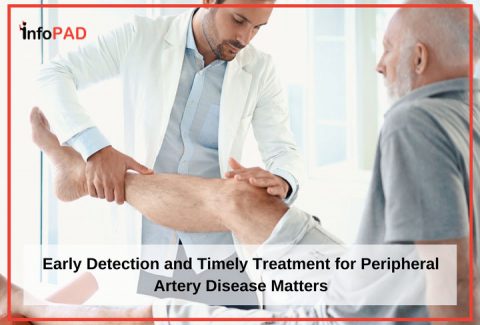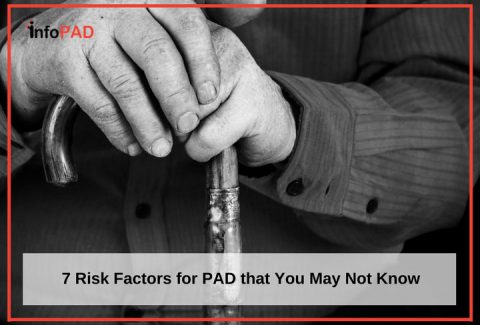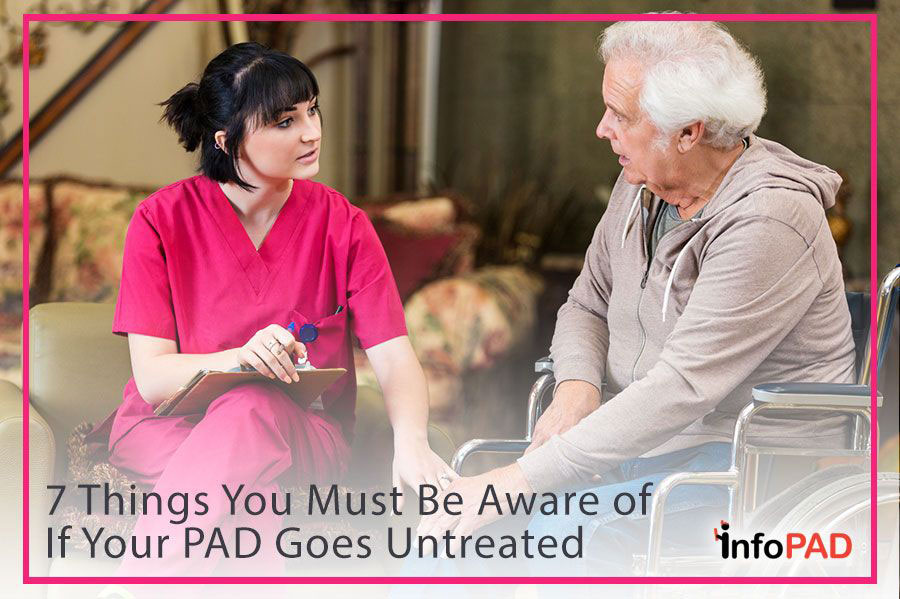
Peripheral artery disease (PAD) is found in 20% of Americans over the age of 50. i PAD can cause a reduced quality of life due to mobility issues, pain, and discomfort, but is frequently misattributed to the normal aches and pains that come with aging. Not treating PAD in a timely manner can result in dire outcomes, including amputation and even death. Below are some of the things you should be aware of regarding PAD treatment options. If you’re showing symptoms of PAD, delaying a visit to a PAD specialist to discuss the risks and your options can have extreme consequences.
1. The longer you wait, the fewer treatment options will be available.
Many PAD treatment options, such as atherectomy, stenting, and angioplasty, are minimally invasive procedures that can often restore full mobility within a week of treatment. However, these treatment options may not be an option in advanced stages of PAD, when the blockage hardens, is spread over large areas, or is in areas too difficult to access. Severe PAD may require bypass graft surgery, which is an invasive surgical procedure with a longer recovery period and more risks. At its latest stages, amputation of the limb with the blocked blood vessel may be the only option to treat PAD.ii
2. Advocate for yourself; know your personal risk for PAD.
Some people assume that since their doctor isn’t bringing up peripheral artery disease, it must not be an issue. Risk for PAD increases with age, but can still be found in middle-aged adults. In fact, 1 in 20 adults over the age of 50 have PAD.iii If you are a smoker, diabetic, or possess any other risk factor for PAD, your chances of experiencing PAD at a younger age are drastically increased.iv
3. PAD symptoms will worsen over time without medical and/or lifestyle interventions.
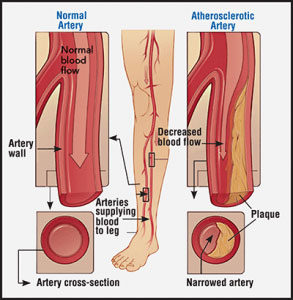
PAD is caused by a buildup of plaque within the arteries. The first symptom of PAD is usually pain after walking for a moderate distance, which resolves after a short period of rest. Because the pain resolves itself, patients with PAD will frequently adopt a more sedentary lifestyle, to avoid the discomfort of physical activity. However, over time, the buildup of plaque will worsen, restricting blood supply further until there is discomfort walking shorter and shorter distances, and eventually, many people even experience pain at rest.v
4. The longer you wait, the more expensive, invasive, and inconvenient the treatment will get.
In addition to the increased invasiveness and risks associated with bypass graft surgery in the leg and limb amputation, advanced stage PAD treatments also have longer recovery times, extensive hospital stays, and require physical therapy to return to an independent lifestyle. When compared to a minimally invasive treatment like an angioplasty, there is far less expense, and patients can many times return to work and their normal activities in as little as two days.vi
5. There is a higher risk for heart attack, stroke, and heart failure.
A recent study looked at more than 1600 patients — some had previously been diagnosed with PAD and were being treated, while others were newly diagnosed and not yet undergoing treatment. It was found overwhelmingly that those who were not being treated had higher rates of heart disease than those who had initiated the treatment process.vii
6. PAD can lead to gangrene.
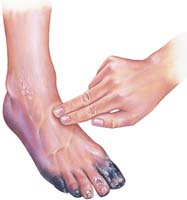 Peripheral artery disease occurs as a result of blockage of the blood vessels that supply blood to the lower extremities. This blood carries valuable oxygen to nourish the tissues and keep them healthy. When that blood supply is depleted, tissue decomposes, and can result in gangrene. This gangrenous tissue can be both limb- and life-threatening, and should be treated immediately.viii
Peripheral artery disease occurs as a result of blockage of the blood vessels that supply blood to the lower extremities. This blood carries valuable oxygen to nourish the tissues and keep them healthy. When that blood supply is depleted, tissue decomposes, and can result in gangrene. This gangrenous tissue can be both limb- and life-threatening, and should be treated immediately.viii
7. PAD can lead to amputation.
Patients suffering from PAD who are over 80 years old represent the highest risk group for amputations — even above patients with diabetes. In women, patients with PAD (regardless of whether or not they have diabetes) have amputation rates 2.5 times higher than patients with diabetes alone. In men with both untreated PAD and diabetes, amputation rates are five times higher than patients with diabetes alone, and 1.5 times higher than those with PAD alone.ix
Peripheral artery disease is a serious condition that is not limited to the elderly, or caused by the typical pains of growing older. PAD is a treatable blockage of the blood vessels that will worsen over time if ignored, increasing the risk of reduced quality of life, pain, reduced mobility, invasive treatments, gangrene, amputation, or death. To stay comfortable, mobile, and healthy, be proactive about seeking out a PAD specialist to evaluate your personal risk for PAD and get screened at the first sign of symptoms.
Sources:
i https://www.nhlbi.nih.gov/health/educational/pad/docs/pad_extfctsht_general_508.pdf
ii http://resources.infopad.com/blog/4-pad-treatment-options-that-may-help-your-leg-pain
iii https://www.nhlbi.nih.gov/health/educational/pad/docs/pad_extfctsht_general_508.pdf
iv http://www.infopad.com/risk-factors-for-pad/
v http://www.webmd.com/heart-disease/tc/peripheral-arterial-disease-of-the-legs-overview
vi http://www.ncbi.nlm.nih.gov/pmc/articles/PMC1584391/
vii http://www.ncbi.nlm.nih.gov/pubmed/24872403
viii http://www.heart.org/HEARTORG/Conditions/More/PeripheralArteryDisease/About-Peripheral-Artery-Disease-PAD_UCM_301301_Article.jsp#.ViRZ5XipqFI
ix http://www.ncbi.nlm.nih.gov/pubmed/26169463


